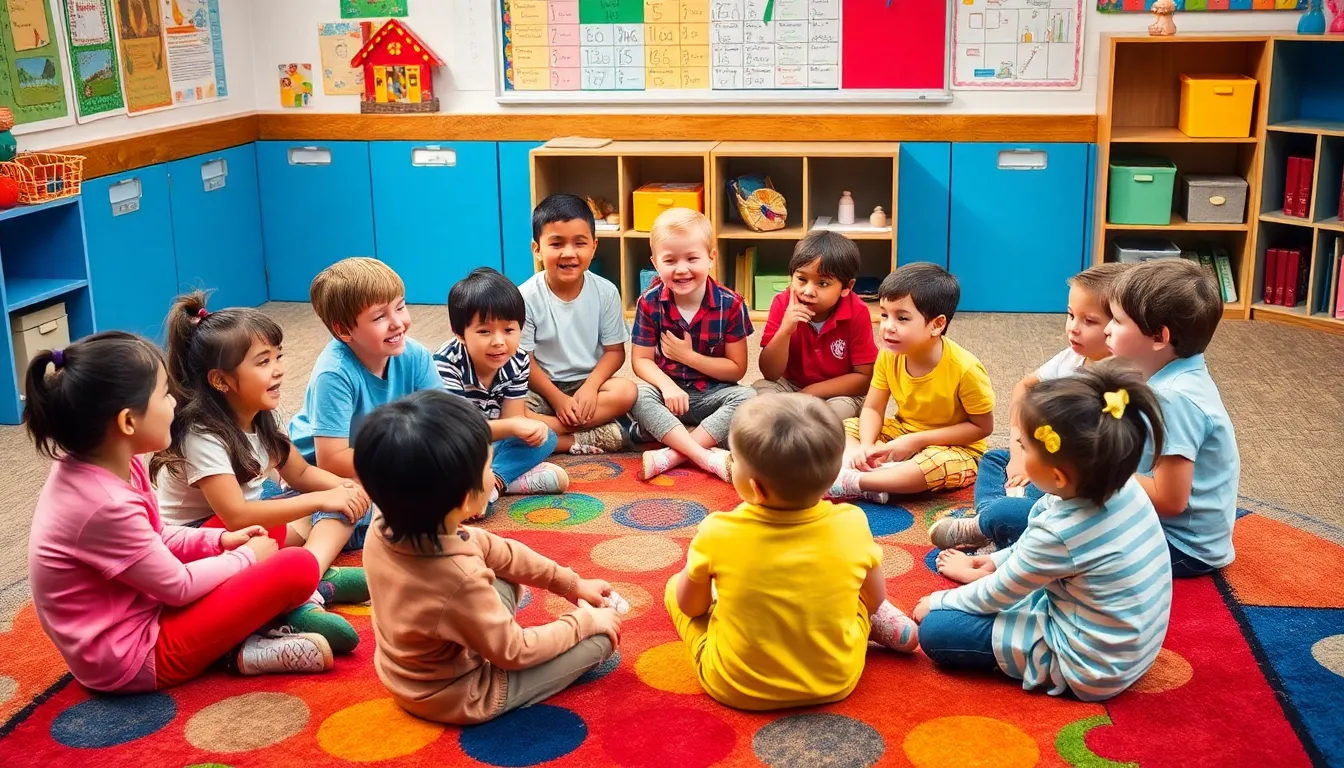In a world where kids are bombarded with endless distractions and social pressures, building a strong emotional foundation has never been more crucial. It’s like giving them a sturdy treehouse in a storm—without it, they might just get blown away by the slightest breeze. Parents often wonder how to help their little ones navigate the tricky waters of feelings and emotions, and the good news is, it’s simpler than teaching them to ride a bike (and way less likely to end in skinned knees).
Table of Contents
ToggleUnderstanding Emotional Foundations
A strong emotional foundation plays a crucial role in a child’s overall development. Establishing this foundation early sets the stage for resilience and healthy relationships.
Importance of Early Emotional Development
Early emotional development significantly impacts children’s mental health. Children with a solid emotional base demonstrate better stress management. They also engage in healthier social interactions and learn to express feelings accurately. Research indicates that emotional well-being leads to improved academic performance and positive life outcomes. By fostering emotional skills, parents can help children navigate challenges more effectively.
Key Components of Emotional Foundations
Key components contribute to building a strong emotional foundation. First, emotional awareness enables children to identify and label their feelings accurately. Second, empathy fosters understanding of others’ emotions, cultivating compassion. Next, coping skills empower children to manage frustration and disappointment constructively. Lastly, secure attachments between caregivers and children create a sense of safety. These components work together to develop well-rounded individuals capable of facing life’s ups and downs.
Strategies for Building Emotional Foundations

Establishing strategies for building emotional foundations is essential for children’s growth. These practices help children become more resilient and emotionally intelligent.
Encouraging Emotional Expression
Encouraging emotional expression allows children to articulate their feelings. Giving them a safe space to share emotions fosters open communication. Using age-appropriate language helps children identify and describe their feelings easily. Role-playing scenarios can illustrate different emotions effectively, making discussions relatable. Regularly asking open-ended questions allows children to express their thoughts and feelings consistently. Highlighting the importance of sharing achievements, no matter how small, boosts their confidence and reinforces their ability to express emotions.
Teaching Emotional Regulation
Teaching emotional regulation equips children with essential coping skills. Naming emotions helps them recognize these feelings in themselves and others. Simple breathing exercises can aid in calming techniques, allowing children to manage intense emotions. Encouraging reflection on feelings helps with understanding emotional triggers and appropriate responses. Modeling emotional regulation shows children the importance of healthy expression. Gradually introducing problem-solving techniques can empower children to address difficult situations constructively while navigating their emotions effectively.
Role of Parents and Caregivers
Parents and caregivers play a crucial role in establishing an emotional foundation for children. Their support significantly influences a child’s ability to develop resilience and healthy relationships.
Creating a Safe Environment
Providing a safe environment is essential for emotional development. Children thrive when they feel secure and valued. Establishment of trust encourages open communication, allowing kids to express their feelings without fear. Safe spaces foster exploration of emotions through play, discussion, and creative activities. This foundation enhances emotional awareness and promotes stronger attachments to caregivers. Consistent routines and supportive responses contribute to a child’s sense of stability. By prioritizing safety, parents empower children to navigate their emotions effectively.
Modeling Healthy Emotional Behaviors
Effective modeling of healthy emotional behaviors is vital for children’s development. Caregivers should openly express their feelings to teach emotional literacy. Demonstrating coping strategies during challenging situations allows children to learn through observation. They mimic behaviors displayed by adults, making it important for parents to showcase problem-solving techniques and emotional regulation. Celebrating achievements and acknowledging frustrations in a constructive manner reinforces positive emotional practices. Active participation in discussions about feelings strengthens the bond between parents and children, promoting healthy emotional habits.
Educational Approaches
Educational strategies play a vital role in building a child’s emotional foundation. Integrating emotional learning in schools fosters essential skills for lifelong success.
Integrating Emotional Learning in Schools
Educators can incorporate emotional learning into their curricula effectively. They might introduce activities that promote self-awareness and empathy. Group discussions allow students to express feelings and practice active listening. Curriculum that includes role-playing scenarios engages students in understanding different perspectives. Incorporating mindfulness exercises benefits students’ emotional regulation, providing tools for stress management. These approaches create an environment where emotional literacy thrives, enhancing classroom dynamics.
Resources for Educators and Parents
A variety of resources exist to support emotional development in children. Books designed for children explore feelings and coping strategies, making them accessible for different age groups. Workshops and online courses help parents and educators learn effective techniques for teaching emotional intelligence. Websites like CASEL offer a framework and guides for implementing social-emotional learning programs. Apps focused on mindfulness provide interactive ways for children to engage in emotional coping techniques. Utilizing these resources enables families and schools to collaborate in nurturing emotionally healthy children.
Building a strong emotional foundation in children is essential for their overall well-being. By fostering emotional awareness empathy and coping skills caregivers empower kids to navigate life’s ups and downs. Creating a safe environment where feelings can be expressed openly is key to this development.
As children learn to articulate their emotions and practice healthy coping strategies they become more resilient and capable of forming meaningful relationships. The collaboration between parents educators and community resources plays a significant role in nurturing emotionally intelligent children. Investing time and effort into this foundation pays off in the long run leading to happier healthier and more successful individuals.



